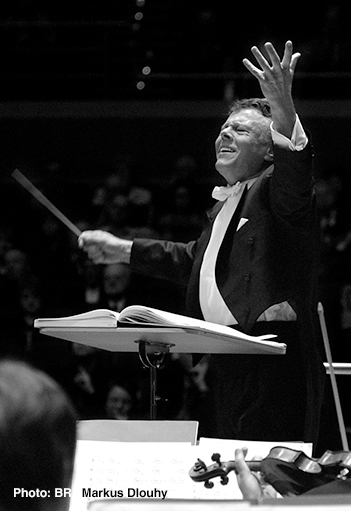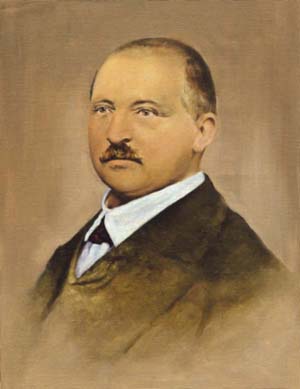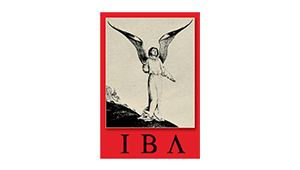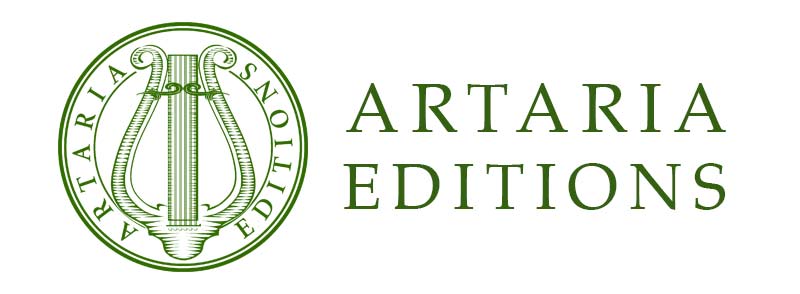Founded in Munich in 1949 under Eugen Jochum, the Bavarian Radio Symphony Orchestra quickly won an international reputation, collaborating with leading conductors and contemporary composers, the latter notably under the Musica Viva programme. Jochum was succeeded by Rafael Kubelík, who held the position of principal conductor until 1979, to be followed by Colin Davis until 1992, and Lorin Maazel. In 2003 Mariss Jansons became principal conductor. Under successive conductors the repertoire of the orchestra has been widened, as well as under many other distinguished guest conductors. In addition to its broadcasts the orchestra gives regular concerts in Munich and elsewhere, and has participated in numerous festivals and recordings.

Mariss Jansons’s earliest memories were of his father, the conductor Arvid Jansons, conducting opera and ballet: ‘As a very small boy, three years old, I was always observing… I went to my father’s rehearsals. When I came home, I put my book on the table and started to conduct. I changed my trousers because they were for rehearsal, not for concert. I played at being artistic director, drawing up programmes for subscription seasons.’ He learned to play the violin in Riga, and in 1957 entered the Leningrad Conservatory, where he studied conducting with Rabinovich, as well as the piano and violin. He made his public conducting debut prior to graduating with honours and then studied with Hans Swarowsky at the Vienna Academy of Music from 1969 to 1972. Having been assistant to Herbert von Karajan at Salzburg in 1969 and 1970, Jansons took first prize at the International von Karajan Foundation Conducting Competition in 1971 and in the same year was appointed associate conductor of the Leningrad Philharmonic Orchestra, working with the orchestra’s distinguished chief conductor Evgeny Mravinsky. The influence of this period in his career was great, especially in terms of standards and expectations. ‘The atmosphere was so pressured,’ he has recalled. ‘Mravinsky demanded such high standards, everybody was afraid to fall below. There was Richter, Gilels, (David) Oistrakh—such quality.’
In 1979 Jansons was appointed to his first chief conductorship, taking charge of the Oslo Philharmonic Orchestra, whose standards he raised significantly. With this orchestra he made many recordings including a highly praised cycle of the Tchaikovsky symphonies, and toured extensively throughout Europe (including appearances at the Salzburg Festival and at the Promenade Concerts in London) and the Far East, both activities greatly enhanced the reputations of conductor and orchestra. He became the Leningrad Philharmonic Orchestra’s associate principal conductor in 1985, a position which he retained until 1999. In addition to his work in the USSR and Norway, Jansons was also active during this time in Great Britain, conducting the BBC National Symphony Orchestra of Wales frequently, and the London Philharmonic Orchestra, of which he was principal guest conductor from 1992 to 1997. As with most conductors of Jansons’s calibre, the work involved with these permanent positions was combined with guest appearances with most of the major European and American orchestras, such as the Berlin Philharmonic, New York Philharmonic, Royal Amsterdam Concertgebouw and Vienna Philharmonic Orchestras. He also maintained the distinguished Russian tradition of teaching conducting when in 1995 he became professor of conducting at the St Petersburg Conservatory, as his father had been before him.
Jansons’s career took a decisive step forward in 1997 when he became the chief conductor of the Pittsburgh Symphony Orchestra in succession to Lorin Maazel. Here too he dramatically improved the standards of the orchestra, an achievement which was acknowledged on its numerous foreign tours even though the orchestra had to work hard at home to increase audience levels. In 1996 Jansons suffered a heart attack while conducting a performance of La Bohème in Oslo and as a result had to take more care of his health. In 2002 he therefore decided not to renew his contract with the Pittsburgh Orchestra after the end of the 2003–2004 concert season and reduced his work in North America, thus cutting down considerably on travelling. He accepted instead the appointments of chief conductor of the Bavarian Radio Symphony Orchestra, once again in succession to Maazel, with effect from the autumn of 2003, and of chief conductor of the Royal Amsterdam Concertgebouw Orchestra from the autumn of 2004.
In style, Jansons’s conducting was a powerful combination of discipline and inspiration. At his best, he had the ability to invest scores with a range of colour and timbre achieved by very few other conductors. He was extremely demanding of orchestral players without being autocratic or overbearing and tried many different approaches to interpretation. Intensive rehearsal produces readings in which the level of musical nuance and subtlety is unusually high: at the same time Jansons was not wholly predictable in performance and often used the inspiration of the moment to make fresh demands upon his players. The associate concert-master of the Pittsburgh Symphony Orchestra has commented on this: ‘Mariss expects intuitive playing and aspires to changing the playing nightly. He expects a kind of musical intuition and a personal involvement.’ The purpose of this approach is to go beyond the notes to a deeper experience: to quote Jansons himself, ‘Imagination is what players expect from a conductor. You must give them what is behind the notes—which is atmosphere, imagination and content. To play the notes is not interesting. But what it means, the cosmic level at which they are detached from problems of playing, that is my job as a conductor.’ The results of this approach are performances that are spontaneous, imaginative and at best very moving, while at the same time being technically highly assured. Jansons himself was clear about his overall objective in performance: ‘Most important for me is that during a performance there is a temperature, because then the public will jump from their seats and after the concert will say, “It was a great experience.” If they come and hear nice tunes but are not touched and excited by the performance, this is very dangerous.’
Jansons’s early recordings appeared mainly on the Chandos label, but he signed an exclusive contract with EMI in 1986 and had since recorded an extensive repertoire with several different orchestras for this company. Highlights of his discography include the complete Tchaikovsky symphonies with the Oslo Philharmonic Orchestra, the complete Rachmaninov symphonies with the St Petersburg Philharmonic Orchestra, and several notable readings of the Shostakovich symphonies with various orchestras. Several of his recordings have received international awards: that of Shostakovich’s Symphony No 7 with the Leningrad Philharmonic Orchestra won an Edison Award in 1989 and his interpretation of Berlioz’s Symphonie Fantastique with the Royal Concertgebouw Orchestra won the Dutch Luister Award.
© Naxos Rights International Ltd. — David Patmore (A–Z of Conductors, Naxos 8.558087–90).

Anton Bruckner, born near Linz in 1824, is known chiefly as a symphonist. He trained as a schoolteacher and organist, serving in the second capacity in Linz until moving in 1868 to Vienna to teach harmony, counterpoint and organ at the Vienna Conservatory. His success as a composer was varied in his lifetime, his acceptance hampered by his own diffidence and his scores posing editorial problems because of his readiness to revise what he had written. He was nine years the senior of Brahms, who outlived him by six months. Bruckner continued Austro-German symphonic traditions on a massive scale, his techniques of composition influenced to some extent by his skill as an organist and consequently in formal improvisation.
Orchestral Music
Bruckner completed nine numbered symphonies (10 if the so-called Symphony No 0, ‘Die Nullte’, is included). The best known is probably Symphony No 7, first performed in Leipzig in 1884; the work includes in its scoring four Wagner tubas, instruments that were a newly developed cross between the French horn and tuba. Symphony No 4, ‘Romantic’, has an added programme—a diffident afterthought. All the symphonies, however, form an important element in late-19th-century symphonic repertoire.
Choral Music
Bruckner wrote a number of works for church use, both large and small scale. Among the former are Te Deum, completed in 1884, and various settings of the Mass, including the well-known Mass No 2 in E minor.






























